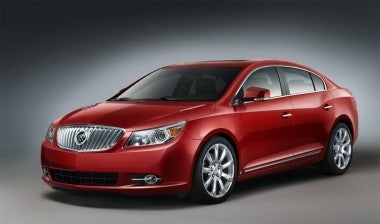Automakers Recognize Value Of Effective Product Localization To Attract Chinese Customers#

Last month, John Quelch of the Harvard Business School and Katherine Jocz, an HBS research associate, outlined a list of "must do's" for brands hoping to appeal to the Chinese luxury consumer market. Among these tips, Quelch and Jocz noted that brands must effectively "Sinize" within the Chinese market, paying close attention to consumer trends and demand throughout the country and adjusting product offerings and design accordingly -- easier said than done, since the Chinese market is geographically, culturally, and academically diverse.
According to Quelch and Jocz, localization strategies that respond to local preferences or tastes – which differ greatly based on geography — and ensure the transliterated brand name sounds “right” in Chinese are the most effective. Additionally, as automakers have shown, localized design can be the key to expanding market appeal. While most of the world's top automakers are developing smaller, more efficient models for developed markets, in China the old adage "bigger is better" has become a mantra for wealthier car buyers.
A recent Xinhua article discussed the strong demand in China for longer vehicles, reflecting the importance that many wealthier Chinese place on hiring chauffeurs and importance of a spacious backseat. From the article:
"If the car body has not been extended to provide enough inside space, it's almost impossible for a luxury sedan to survive in China's high-end vehicle market, especially the official car market," said Jia Xinguang, an independent auto analyst based in Beijing.
"If someone is spending half a million yuan to buy a car, why choose a smaller one?" asked An Li, a 53-year-old civil servant who is considering buying a BMW 530Li. "A big car not only brings me comfort, but also indicates my taste and wealth."
...
Following the trend after seeing the huge success of other carmakers in building unique limos for the country, Volvo launched the long wheelbase version S80L sedan last year, only for the China market. It demonstrated the importance of the Chinese market to global carmakers as well as the unique forces and demands within that market.
Even the conservative and prudent German premium car brand Mercedes-Benz cannot ignore the special demands of Chinese consumers. It will locally produce the extended version of the New E Class this year in Beijing.
Creating longer "China-only" versions of existing models appears to be a good strategy for appealing to older, wealthy individuals who prefer to hire drivers, but what about younger individuals who prefer to drive themselves? It doesn't make much sense for global car companies to develop new models only for China, so what we're seeing is companies like Buick using their Chinese team to redesign models like the 2010 LaCrosse. Much of the impetus that major car companies are placing on Chinese input comes down to the country's new status as the world's largest auto market.
As a China Daily article this week points out, though China only gained this title within the last few months, its size, massive population, and future potential should have a trend-setting effect on car design both at home and abroad for years to come:
As Chinese become the dominant market force in the global car industry, more autos are being built to suit their tastes. General Motors, for example, had its Chinese team design the 2010 Buick LaCrosse because the car sells better in China than in the US.
The team incorporated fengshui principles, monotone color schemes and other elements based on Chinese art.
With the Buick GL8, a family minivan, the carmaker gave the model a more stylish interior and longer hood with a more pronounced grille and headlamps to appeal to rich businessmen in China, according to BusinessWeek magazine.
"Understatement in China is a no-no," Stefan Fritschi, VW's design head told BusinessWeek. "You want to impress your neighbor."